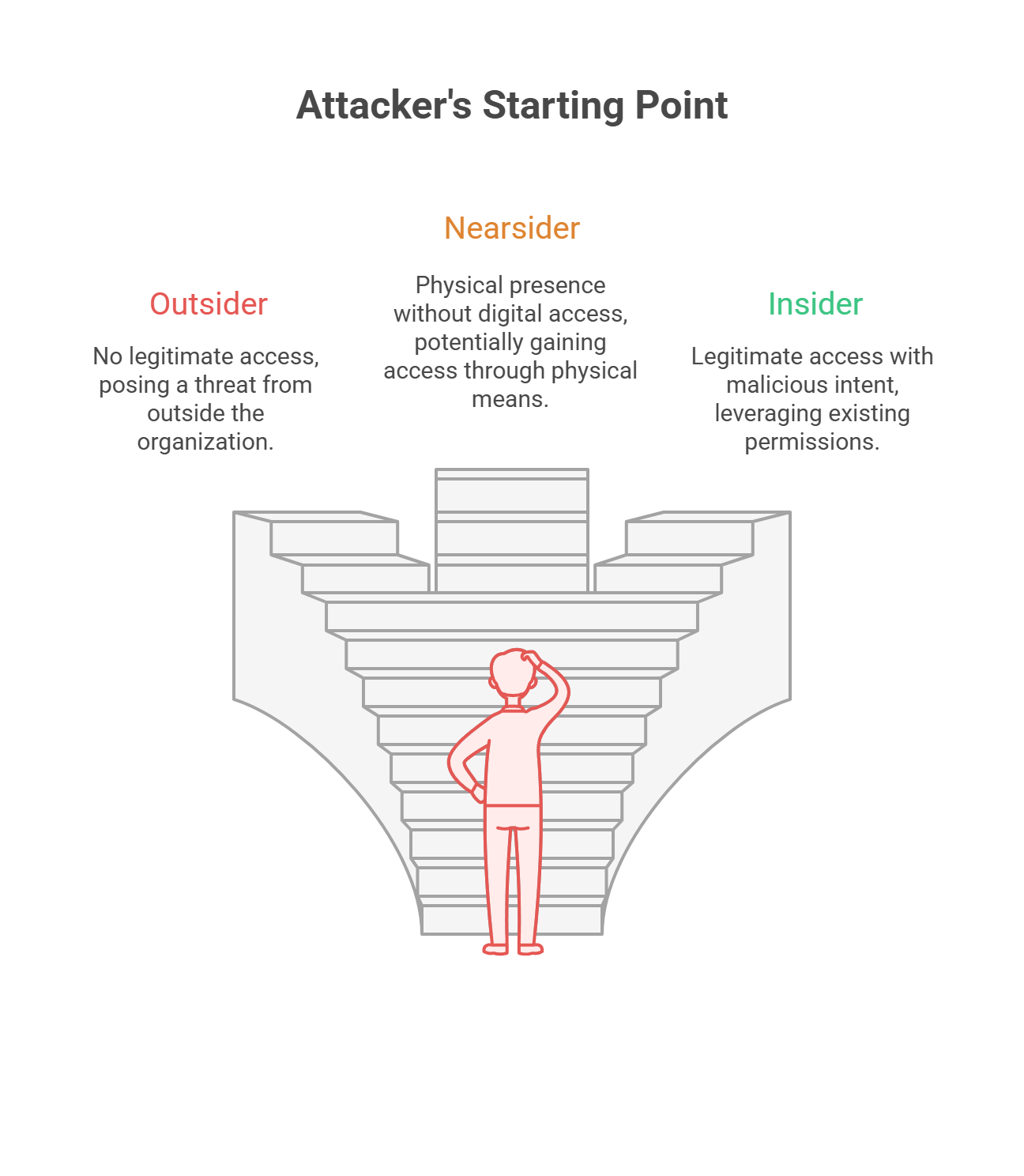The "Get In" Phase
This article explores the theoretical foundations of the Get In phase, which represents the critical step of initial access.
Objective of the "Get In" Phase
The goal of the Get In phase is to gain initial access to the target network.
This step is crucial as it establishes the foundation for the rest of the engagement.
The key question it seeks to answer is:
👉 Can the organization detect and prevent an initial intrusion attempt?
This evaluation goes beyond technical vulnerabilities. It measures the effectiveness of:
- Security staff and monitoring,
- Policies and procedures,
- Detection tools and controls.
Methods of Initial Access
There are two main pathways for establishing initial access:
- Legitimate Compromise – Exploiting a real vulnerability or weakness to gain entry.
- Direct Grant (Assumed Breach) – Starting from an insider or pre-compromised position.
The assumed breach model is often the most valuable. Instead of spending time proving entry, it allows Red Teams to simulate a more advanced stage of attack, testing the organization’s detection and response capabilities more efficiently.
Core Activities of the "Get In" Phase
The Get In phase is guided by an adversarial mindset and focuses on realistic attacker behavior:
1. Reconnaissance & OSINT
Passive collection of information from public sources (websites, social media, code repositories).
This mirrors how real adversaries map an attack surface without triggering alerts.
2. External Enumeration
Identification of external assets (hosts, domains, URLs) and potential exposures.
The emphasis remains on stealth—avoiding aggressive scans or noisy actions early on.
3. Exploitation as a Means, Not the Goal
Unlike penetration testing, exploitation here is only a stepping stone.
If one vulnerability provides access, the Red Team uses it and moves on, focusing on persistence and stealth rather than listing every flaw.
4. Threat Perspective
Defining the attacker’s starting point:
- Outsider – No legitimate access.
- Nearsider – Physical presence, no digital access (e.g., contractors).
- Insider – Legitimate access with malicious intent.

This choice directly shapes the scenario and ensures realism.
5. Exploitation Without Exploits
Many intrusions rely on misconfigurations, weak controls, or design flaws rather than complex exploits.
This reduces Indicators of Compromise (IOCs) and makes the intrusion resemble legitimate administrative activity.
6. Social Engineering
Exploiting human factors through phishing, vishing, or pretexting.
If users fall victim, the failure lies in inadequate organizational controls—not the user alone.
Red Teams use SE to highlight the need for layered defenses that go beyond user awareness training.
Key Takeaways
The Get In phase is not about compiling a vulnerability list.
It is about telling a credible story of how an adversary could breach defenses and whether the organization can:
- Detect the intrusion,
- Respond effectively,
- Prevent escalation.
By focusing on Tactics, Techniques, and Procedures (TTPs), Red Teaming ensures that this first phase provides actionable insights into real-world defensive readiness.